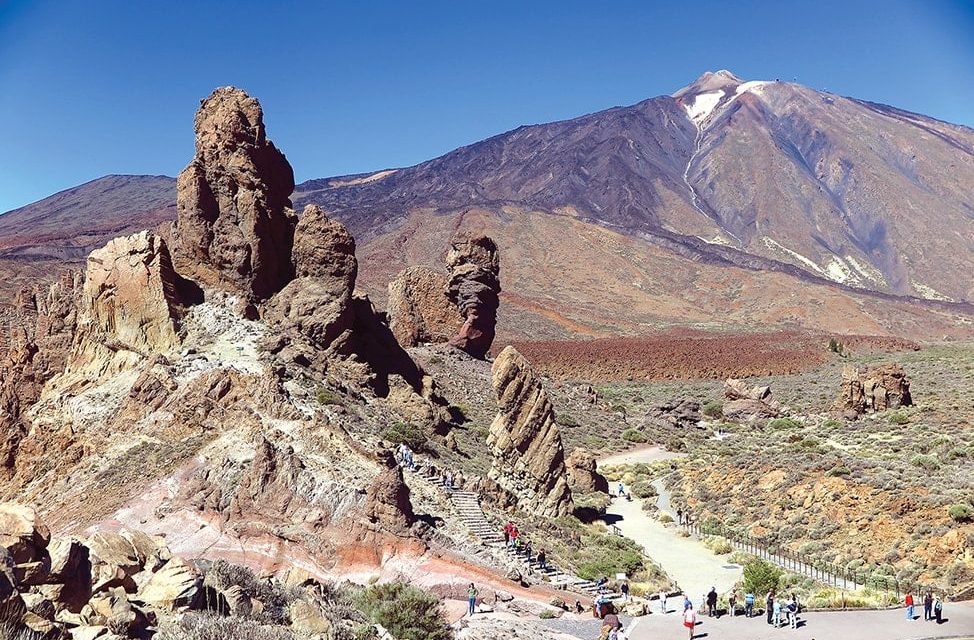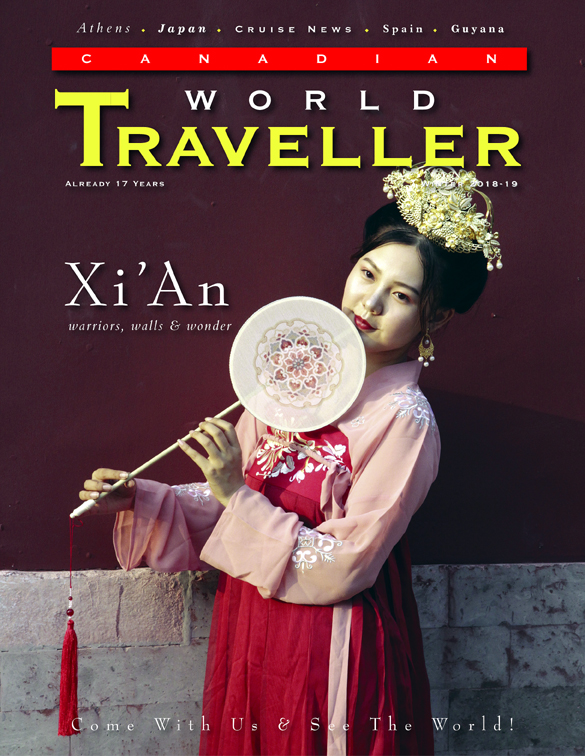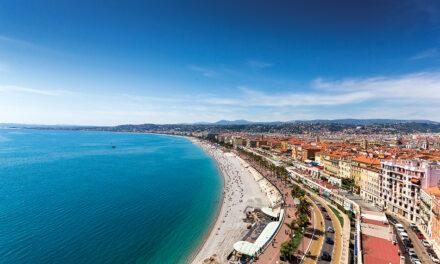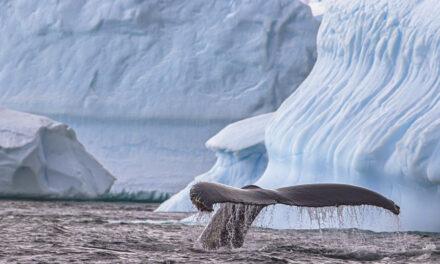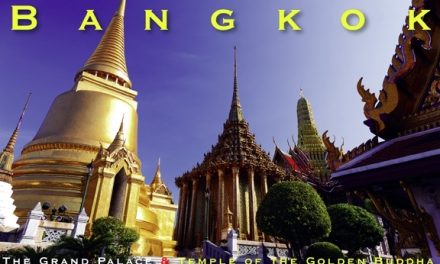Spain
3-2-1 Go Tenerife!
Article and photography by Michael Morcos

That is the exact amount, 321, of volcanoes that reside upon the Spanish island of Tenerife, which is astonishing given that it is a relatively small island. That was lesson number one on a journey that would prove to have many.
Lesson two, Tenerife is not even close to Spain, as it is part of the fabled Canary Island chain in the Atlantic Ocean off of the African coast and close to Morocco and Mauritania and is about a three hour flight from the mainland of Spain.
Lesson number three I found out just getting off the plane. Yes, there are lovely little singing canary birds but that is not how this island chain got its name. In actual fact, they got their name from the Spanish word for canine, which translates to a word sounding like Canary, as wild dogs were found here many centuries ago. The name stuck.
And that is how our trip would be, every day we would find out some of the most fascinating things about this island paradise. We would venture in every direction to find ever diversifying climates, breathtaking landscapes, a colorful history, endless eating options and laid back, welcoming people.
Anaga Rural Park
On our first full day, we were off to visit the Anaga Rural Park. It was mere minutes from our hotel in the town of La Laguna. The drive alone was worth the venture as we climbed to dizzying heights along winding roads that clung to cliff edges. Once there, it felt like a whole other world. The air was cool and dense with fog, the trees were heavy with dew and the mist, when it occasionally lifted, offered spectacular glimpses of the valley below.
I would find out later that this micro-climate we were in was due to the famous trade winds from the Caribbean that would hit only the northern part of the island. For that, Tenerife was a valuable stopover to and from the mainland to the Spanish colonies.
With many natural trails available for hikers, this park was an outdoorsman’s delight. The only thing missing on our short walk through this ‘enchanted forest’ was Snow White, the seven dwarfs and mystical little fairytale animals.
Cave Dwellers
Not far away, the scenery would be transformed into a barren mountainous landscape, devoid of trees and having, of all things, cactuses and low lying scrub. This is Tenerife, and when you are tired of your surroundings, just drive a few minutes. Amongst the very rugged and hilly terrain we would find cave dwellings. These homes had been dug right into the mountain side, and were part of a way of life for many as building material for homes is hard to come by and expensive.
The cave-homes we walked by were now mostly used as weekend homes, but we did meet a man who was enamored by the solitude and tranquility. He lives a quiet life, gardening for his produce and enjoying the fresh air and incredible scenery. He did invite us into his humble home, which was small and cluttered but warm and welcoming at the same time. He even played his guitar and sang rural folk songs. This was a moment to remember, so little of this magic is found in our modern world.
A lunch like no other
With such a packed morning we were due for a break. Our journey would bring us to ‘the end of the world,’ or that is how locals looked at it. We drove up the mountain to make our way down to the sea and feast at ‘Casa Africa’. Sounds weird to speak of Africa while in Spain, but this slice of land is part of the African continent. Our restaurant break would be a favorite of mine. It was located directly across from the ocean with a seated view of waves smashing the shores. The menu was (of course) freshly caught fish. Added to that was delicious local wine and garden vegetables, and I feasted like a king.
Capital Affair
Although La Laguna was the capital of Tenerife for many years, it lost its title to Santa Cruz. La Laguna was built inland to evade pirate raids and is one of the few cities without fortified walls for this reason. With the changing of the times, incoming ships wanted a direct access to a port to unload goods, and Santa Cruz was a perfect place.
Santa Cruz might be small but it sure packs a punch. Among many wonderful attractions there is Las Teresitas beach which is a wonderful man made beach and interestingly, ship loads of sand were brought in from the Sahara to make it.
How about the world class Adán Martín Auditorium with a unique signature look like no other. Then there is the fabulous annual carnival, with a museum (La Casa del Carnival) devoted to it and houses many elaborate and colorful costumes from the many years it has run.
There is a great pedestrian street to stroll or enjoy an outdoor meal and there are also many shopping options including the very distinctive Spainish store, El Cortes Ingles. Add to all this a beautiful and well-kept botanical garden, a new cruise ship port, centuries of history and a safe, peaceful and easy- going atmosphere and you have remarkable and livable city.
The number one island attraction
Parque Nacional del Teide is special place and to not to be missed. Once again on our visit we would find a totally unique landscape that can only be described as being from another planet. So much so that NASA actually used this landscape to test its probes bound for Mars. Our day would bring us to the very top of Mount Tiede, an active volcano that is also the highest point in all of Spain. Ascending this giant can be done by foot, which would take a few hours. We opted for a gentle gondola ride that whisked use up in just minutes.
Once on top the air was fresh, as was the temperature. The views were simply divine. Many trails in many directions were available for visitors but the going was rough. First, the oxygen was thin which made it hard to breathe, as well as the volcanic terrain that was extremely uneven and at times quite challenging.
Lunch with a view
Our reward for the strenuous workout was nothing less than spectacular, as we would treat ourselves to world class cuisine at the Parador de las Cañadas del Teide. This Parador property is part of many delightful government-owned and run hotels all across Spain, renowned for their ideal locations, history of the buildings and for comfortable full service lodging.
Puerto de la Cruz
For something completely different (again), we would visit the ever popular Puerto de la Cruz. There we would find this well-traveled tourist destination known for a pleasant climate, amazing surf and the general calm and peace of a small town atmosphere. In strolling through this gem, I would find many historic churches, a wonderful shopping street and breathtaking ocean vistas. Our night would bring us to another great meal, this time a supper at the Restaurante Régulo where we had local Tenerife cuisine in what is one of the oldest buildings on the island.
Dragon Tree
One giant stands out in Tenereife. It is not unique to this island, but the locals are very proud of their Dragon tree. This is no ordinary palm tree, but one that grows in a specific way where the top of the tree pushes out branches and those branches push out more branches and so on and where the tree always looks symmetrical. We had the opportunity of seeing what is believed to be the oldest surviving Dragon tree in the world, some 800 years old and looking healthy and majestic. The best place to experience this beauty is a La Casa del Drago, where we would have coffee and samples of exotic fermented spirits, some of which I have never heard of, like the liquor of the Dragon tree.
Masca
A highlight of our tour would be to a secluded and out of the way town of Masca. Close to the sea and nestled in between mountains, this small village is authentic and has kept its charm even when a road was built to help bring the many tourists who visit there. Engineering experts have created a route to one of the most exciting drives I have ever been on. A true and memorable experience on its own, the prize was being in a village most have never heard about until a short while ago.
Boutique Hotel San Roque
Close by was the beautiful town of Garachico, with a long history that dates back to colonial age and was an important stop for ships sailing to and from the new world, but a deadly volcano changed this area forever as it destroyed much of the city. Visiting, we would find ourselves at the Boutique Hotel San Roque. This once abandoned hotel fell into near ruins until a family adopted it, and, in a short 20 years, brought it back to its days of glory. Today it is a gem and the pride of the town.
Monje Winery and Mojo Lesson
Second to last lesson, we would find out that Tenerife not only grows grapes and produced wines, it also had some of the most contrasting grape varieties and wine tastes of any one small region in the world.
Our trip to the Monje winery was a great example of this. Owner Felipe Monje would lead us on a visit through his estate which was world class on its own and where he had expanded the wine offerings from the original four to some 18 different wines.
Loving the atmosphere of being in a winery, our fun would continue as we would participate in a contest to produce the best Mojo (local spicy sauce) all the while sipping wonderful estate wines. Although we did not win I did pick up my last Tenerife lesson, I was now a Mojo man!
www.webtenerife.co.uk
Click on cover to view published article

